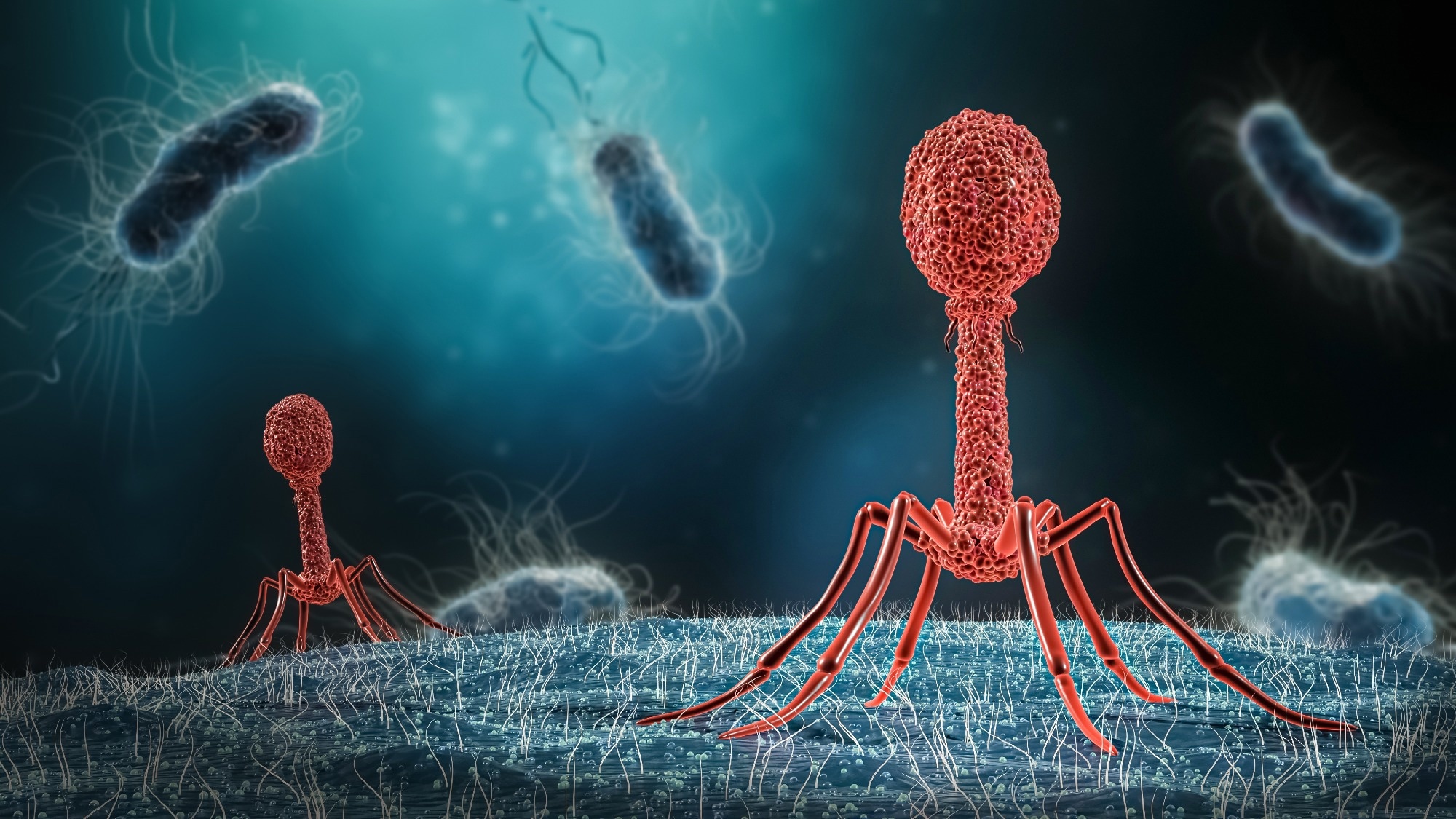In a recent study published in the Proceedings of the National Academy of Sciences, researchers demonstrated biological bacteriophage containment and synthetic engineering.
 Study: Synthetic engineering and biological containment of bacteriophages. Image Credit: MattLphotography/Shutterstock
Study: Synthetic engineering and biological containment of bacteriophages. Image Credit: MattLphotography/Shutterstock
The grave dangers posed by drug-resistant bacterial diseases and recent advances in synthetic biology have driven significant attention to genetically modified phages with therapeutic potential. So far, numerous studies on modified phages have been confined to proof-of-concept (POC) or foundational research utilizing phages with relatively short genomes or "phage display kits." In addition, no precautions ensuring effective translation for practical application have been implemented.
About the study
The present study created a platform for cell-free phage engineering and rebooting.
First, the team sought to reboot several wild-type (WT) phages that infected gram-negative bacteria and acid-fast mycobacteria using genomes assembled in vitro. Polymerase chain reaction (PCR) was used to amplify the fully assembled phage genome obtained from either chemically-generated deoxyribonucleic acid (DNA) or template phage genome. Primers were developed to generate 28 bp to 65 bp homologous areas in every adjacent PCR fragment. These pieces were assembled and electroporated into bacterium hosts, resulting in the reactivation of phages.
The team developed fragments that enabled end-joining to reboot phages derived from circular genomes. Coliphage lambda was effectively reactivated from five fragments in Salmonella phage P22 and E. coli, along with four fragments present in S. Typhimurium LT2. The model mycophage D29, which infects acid-fast Mycobacterium spp and has a high guanine-cytosine genome, was also rebooted. Five DNA fragments were produced to create the circular genome.
Results
The model coliphage T7, having a linear genome, displayed linear concatemerization at the replication time and was used to evaluate the study strategy. The linear genome was constructed from four PCR fragments and then electroporated into E. coli to reactivate the phage T7. Coliphage T3, Pseudomonas phage gh-1, and Salmonella phage SP6 were predicted to have genomic architectures and life cycles comparable to those of T7. The team also successfully regenerated T3 from E. coli DNA fragments, SP6 from Salmonella Typhimurium LT2 DNA fragments, and gh-1 from Pseudomonas putida DNA fragments. These outcomes demonstrated that the study design guideline and methodology were effective for rebooting phages from assembled linear genomes.
The functional mycophage D29, an uncharacterized mycophage B1, and GS4E were rebooted from M. smegmatis mc2 155. Mycophage TM4 was constructed from six chemically produced DNA segments based on its publicly available sequence data. The DNA fragments underwent amplification to demonstrate a 28 bp to 38 bp overlap with adjacent portions, purified, and then circularized in vitro. The genome was introduced into M. smegmatis mc2 155. The functioning synthetic TM4, whose genome was chemically produced, was rebooted. The entire synthetic TM4 genome was sequenced by MiSeq and proven to be 100% identical to the referred TM4, indicating effective phage rebooting from sequence data.
The well-characterized phage T7 was selected as a model for the POC investigation. The T7 machinery identified a packaging signal sequence (Pac) to "package" or "store" its genome in a T7 head particle. Pac comprises PacB and PacC. Terminase small subunit gp18 binds with the subunit gp19–prohead complex for DNA translocation into phage head. Following headful packaging, the team noted that gp19 cleaves at PacC in the concatemeric T7 phage genome, leading to T7 head maturation.
Then, a plasmid containing the Pac and "your favorite gene" (yfg) was created and injected into E. coli. Electroporation of the genome into the E. coli cells containing the plasmid produced synthetic transducing particles based on T7 (T7Pac). In the cell, the genome devoid of Pac generated progeny virions before packaging the plasmid containing Pac into head particles, yielding T7Pac-yfg. Using this method, the team synthesized T7Pac-lacZ, a plasmid harboring lacZ. The lysate was combined with lacZ-deficient E. coli, followed by plating with LB X-gal plates. Thus, 1.6×104 CFUs/mL of T7Pac-lacZ were generated, and all colonies that formed were blue. On the bacterial lawn, T7Pac-lacZ did not develop plaques, suggesting biological containment.
The team built the SP6 phage genome minus the capsid protein-encoding gene 31. The genome was introduced into the LT2 strain of S. Typhimurium, which expressed gene 31. Using PCR, the deletion of gene 31 from the synthetic SP6Δhead was confirmed. The obtained high titer SP6Δhead lysate developed plaques on a lawn of LT2 that expressed gene 31, which were not present on the parental LT2.
Overall, the study findings demonstrated the generation of natural and engineered phages that infect gram-negative bacteria and acid-fast mycobacteria via in vitro genome assembly.